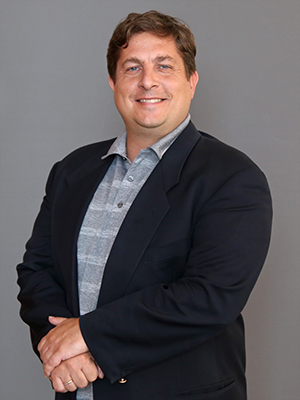Yuri Bazilevs
E. Paul Sorensen Professor of Engineering Yuri Bazilevs works to bridge applied and computational mechanics, applied mathematics, and computer science to solve a myriad of problems.
 Yuri Bazilevs knew two things as a young adult in Latvia in 1996. He was adept at math and physics, and he wanted to get a university degree in the United States. As he puts it, Rensselaer Polytechnic Institute just happened to be where he ended up. His journey to Brown University actually traces its beginnings to his final undergraduate semester there, when he entered Kenneth Jansen’s large-scale simulation lab. Jansen’s work with finite elements and fluid mechanics also involved sophisticated coding, including blood flow, which piqued Bazilevs’ interest, and Jansen provided Bazilevs with research papers from his own adviser, Thomas J.R. Hughes, supplementing the lab’s work.
Yuri Bazilevs knew two things as a young adult in Latvia in 1996. He was adept at math and physics, and he wanted to get a university degree in the United States. As he puts it, Rensselaer Polytechnic Institute just happened to be where he ended up. His journey to Brown University actually traces its beginnings to his final undergraduate semester there, when he entered Kenneth Jansen’s large-scale simulation lab. Jansen’s work with finite elements and fluid mechanics also involved sophisticated coding, including blood flow, which piqued Bazilevs’ interest, and Jansen provided Bazilevs with research papers from his own adviser, Thomas J.R. Hughes, supplementing the lab’s work.
At the time, Hughes was beginning a move from Stanford to the University of Texas’ Institute for Computational Engineering and Sciences (ICES). Bazilevs would continue with Jansen at RPI for his master’s before moving to Austin for his Ph.D. in Computational Science, Engineering and Mathematics from the Institute, and his opportunity to study directly with Hughes. “The program was set up by a visionary founding director (J. Tinsley Oden) to reside within ICES and not the traditional departments, creating an environment of truly interdisciplinary research between applied mathematicians, engineers and computer scientists,” Bazilevs said. It was during this time that he, Hughes and Austin Cottrell carried out the early developments in and published their revolutionary computational technology called Isogeometric Analysis (IGA). In essence, IGA builds on the primitives of computer-aided design and computer graphics systems, generalizing and improving upon finite element analysis, with the potential to bridge the gap between design and analysis. IGA has had a significant impact in computational mechanics, and is a prevailing research direction in the field today.
While at ICES, Bazilevs met David Benson (Professor Emeritus at University of California, San Diego) and Tayfun Tezduyar (Professor at Rice) who inspired his interests in computational solid/structural mechanics and fluid-structure interaction, respectively. When, with the help of Benson, an opportunity arose at UCSD for an assistant professor of structural engineering (the only structural engineering department in the nation), Bazilevs was well prepared to instruct and research in areas of civil, mechanical, and aerospace structures, such as bridges, wind turbines, and aircraft. His training in large-scale computational mechanics fit well with the school needs and industry connections at UCSD. “While I was at San Diego, the research interest in IGA technology really took off,” said Bazilevs. “A part of my success was just being involved at the ground level, building the technology we needed to move forward. It also happened to be during that time that I first met Larry Larson,” he said, referring to Brown’s Sorensen Family Dean of Engineering who was on the faculty at UCSD from 1996-2011.
“Toward the end of my time there, together with Professors JS Chen and Gil Hegemier, we started the Center for Extreme Events Research, working to simulate and assess what happens to structures under extreme loading, such as a bullet penetration, and retrofitting the structure to minimize damage. We answered these questions using combined advanced computational methods and experimental investigations.
“At UCSD I also had excellent collaborations with mechanical and biomedical engineers, working on biomechanics applications such as simulating cardiovascular fluid-structure interaction in patient-specific blood vessels, as well as in cardiac assist devices like blood pumps.”
I’m very excited to join the ranks of the Brown faculty. Brown has a long-standing tradition of excellence in engineering and applied mechanics. I bring expertise in computational mechanics that will complement many research activities in the solid mechanics and other groups.
Bazilevs joined Brown as the inaugural E. Paul Sorensen Professor of Engineering in July 2018. “I’m very excited to join the ranks of the Brown faculty,” Bazilevs said. “Brown has a long-standing tradition of excellence in engineering and applied mechanics. I bring expertise in computational mechanics that will complement many research activities in the solid mechanics and other groups.
“In addition, I look forward to teaming up with the applied mathematics faculty on the development of theoretically sound numerical methodologies that are able to address pressing challenges in engineering and applied sciences. I also look forward to working with research and clinical faculty at the Warren Alpert Medical School to bring our advanced modeling and simulation capabilities to address challenges in predictive medicine applications. Also, given the reputation of solids mechanics at Brown, I’m sure I will be working with high-quality graduate students, which is critically important for building and maintaining a thriving research program.”